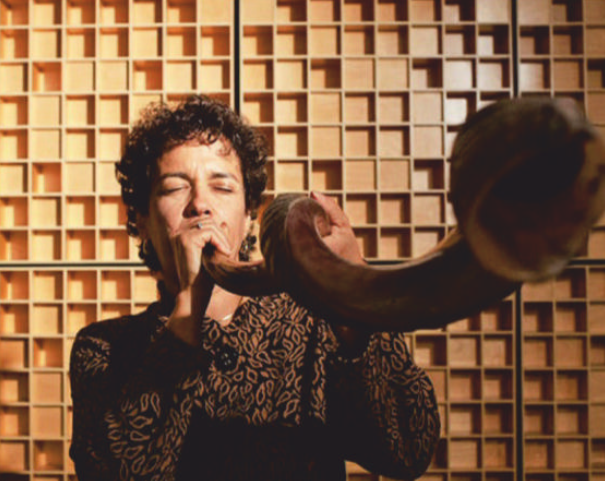After every morning service through the month of Elul, then through Rosh Hashanah—Jewish new year—on to Yom Kippur, the day of atonement, Rabbi Lauren Holtzblatt, her friend, would call out: Tekiyah. She would respond with a single note, the awakening summons to Jews to focus on the year that has passed and think about the type of people they would like to be.
每天早晨做完以祿月的禮拜后,再過猶太新年哈桑納節,直到贖罪日,就是贖罪日,她的朋友拉比勞倫·霍爾茨布拉特會喊出:“Tekiyah”。她會用一個音符來回應,這是對猶太人的喚醒,讓他們關注過去的一年,思考他們想成為什么樣的人。
Shevarim, the cry from the heart, the triptych of notes that speak of a sense of brokenness. Teruah for the nine staccato notes that, like an alarmclock, she would say, would summon the listener, “Wake up, wake up, wake up. Now is the time to do something.” And then Tekiyah gedolah, the final long note, that refers to a oneness, a total unity coming together. Over 100 notes in all, more than an orchestral hornplayer would expect to sound in an evening concert, blowing the shofar at Rosh Hashanah is a challenge that takes knowledge of the tradition, technique and spiritual engagement.
舍瓦林,那發自內心的吶喊,那三聯音符,訴說著一種破碎的感覺。特魯阿的九斷奏音符訴說出這種感覺,她會說,就像阿拉麥克洛克在召喚聽眾,“醒醒,醒醒,醒醒。”現在是時候做些什么事情了。”然后是“Tekiyah gedolah”,最后一個長音符,指的是一種合一,一種完全的合一。總共有100多個音符,比管弦樂隊的號角演奏者在晚間音樂會中演奏的還要多,在猶太新年吹奏羊角號是一個挑戰,需要傳統、技術和精神投入的知識。

The shofar is usually men's business. As a woman, she had to be twice as good. She had help, she said—a perfect shofar, carved to fit her mouth exactly by a man called Shimon who lived on the Golan Heights and knew just enough English to tell her: “Blow!” There was also, she believed, divine assistance. At home when she took her deepest breath for the Tekiyah gedolah, she could manage only 40 seconds. But in the synagogue she managed to stretch that out to nearly a minute. Her son had timed her.
羊角號通常是男人的事。作為一個女人,她必須比別人強一倍。她說,有人幫助她——一個完美的羊角號,由一個住在戈蘭高地的名叫西蒙的人雕刻而成,剛好適合她的嘴,他的英語只夠告訴她:“吹!” 她相信,還有神的幫助。在家里,當她為吹奏“Tekiyah gedolah”音符深吸一口氣時,她只能堅持40秒。但在猶太教堂里,她設法把時間延長到將近一分鐘。她的兒子給她計時。
譯文由可可原創,僅供學習交流使用,未經許可請勿轉載。












